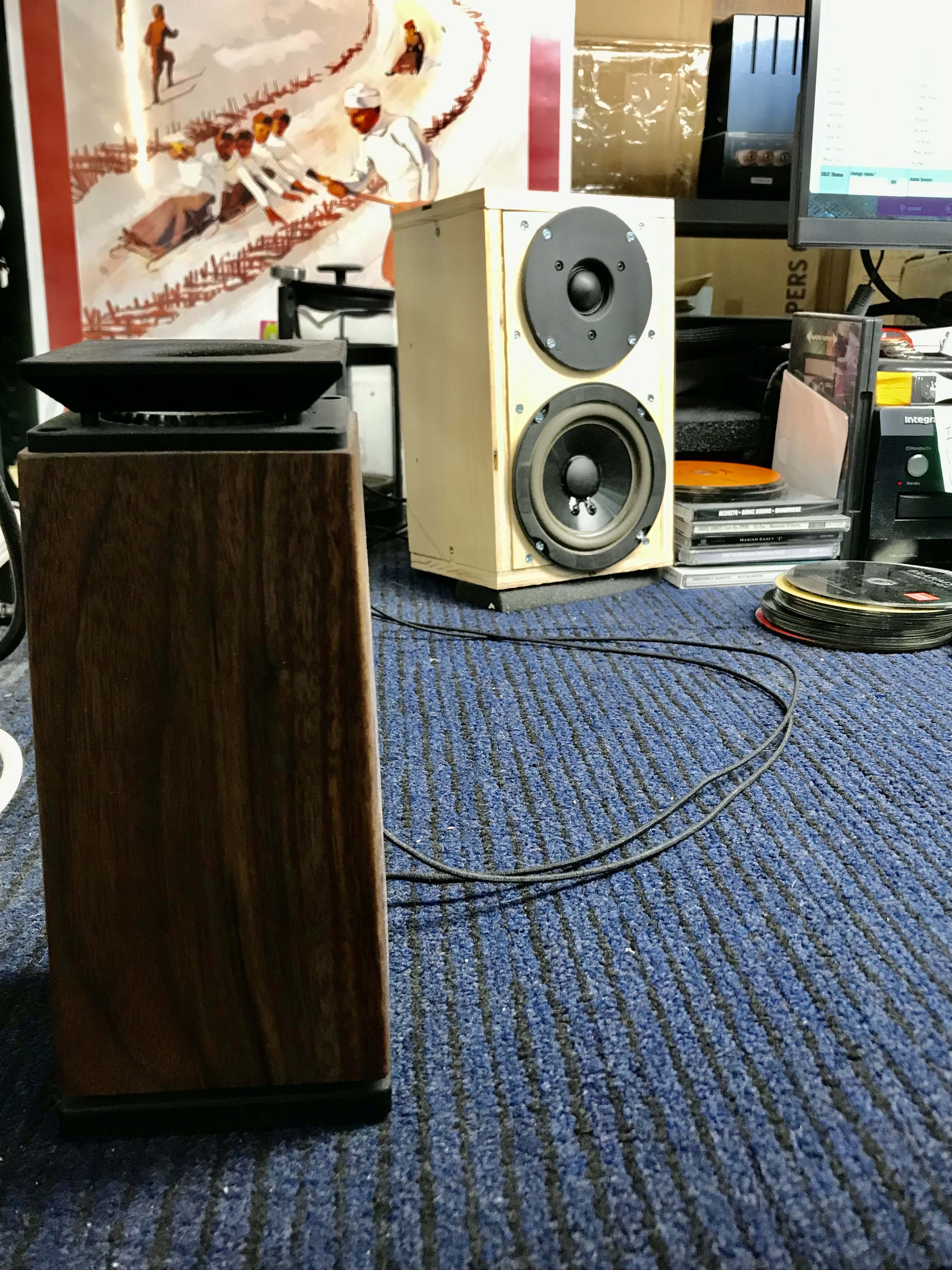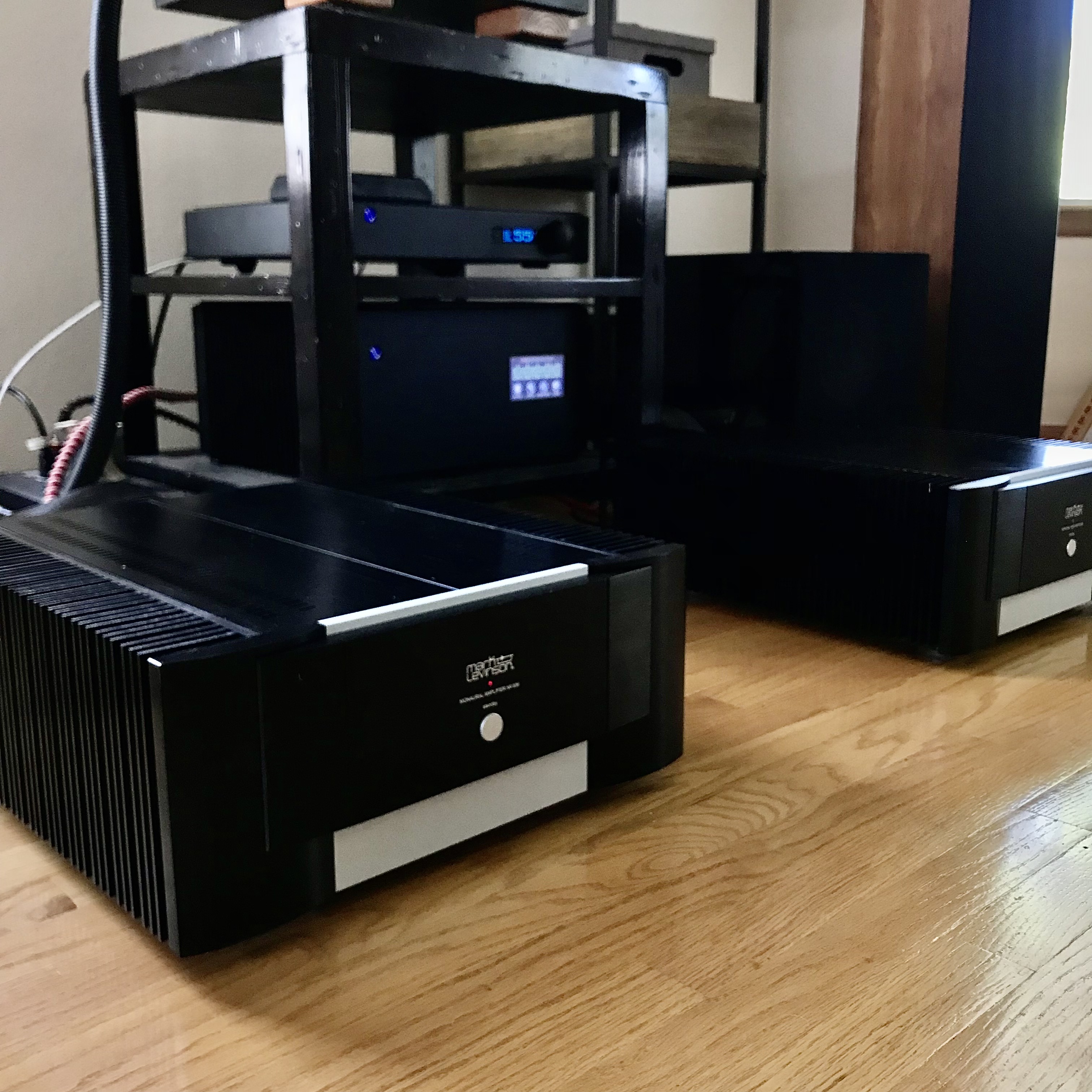The Gearhead: An Afternoon With Monos, Part 1

It can be exciting, and also just a little bit of a bummer whenever I see a product I write about in The Gearhead blog sail out the door immediately. Now, of course I have to be excited that a product that really captured my fancy is going to be enjoyed for a length of time by another audiophile, somewhere out there.
But for everyone else reading my words of praise for this funky tube amp or that rare pair of speakers, seeing it’s no longer available must be a little bit of a letdown. Which brings me to the raison d’etre of today’s post, the idea of which began when a bunch of huge amplifiers rolled through the door at the same time.
It’s not every day in The Music Room’s testing department that we see two pairs of the same mega amp come through to be listed, but recently we had to put our muscles to work when we received four giant Mark Levinson boxes from two different previous owners. Inside each pair of boxes were left and right channels of Levinson’s amazing No. 536 monoblock amplifier, and it occurred to me that this situation could be different.
Really, there’s a great chance that if you’re reading this weeks after the initial post, one of the pairs may still be available. The No. 536 from Mark Levinson is a statement design, and and a foundational piece — the purchasing of which is the kind of major component decision that requires much consideration on the part of the audiophile. So I felt like this was a great chance to get to know what ML is up to for my own curiosity, and offer some commentary that will help the next owners make their decision. My back and arms were going to protest, but I signed up to do a little mini review, Gearhead style.
 OK, that’s great, but one look at my desktop speakers here at TMR headquarters (at right) and I realized I’d really have to take a pair home to properly review and write about them. My homemade mini monitors flanked by Decware’s curious little Tiny Radial desktop omnis are fun (and together they cast a soundstage like an IMAX movie), but they won’t help me answer the essential question for the audiophile considering a pair of Ultra-Fi, foundational mono amplifiers in a commensurately apportioned stereo system. Namely, “How does the No. 536 interact and mate with modern state of the art or otherwise reference speakers?”
OK, that’s great, but one look at my desktop speakers here at TMR headquarters (at right) and I realized I’d really have to take a pair home to properly review and write about them. My homemade mini monitors flanked by Decware’s curious little Tiny Radial desktop omnis are fun (and together they cast a soundstage like an IMAX movie), but they won’t help me answer the essential question for the audiophile considering a pair of Ultra-Fi, foundational mono amplifiers in a commensurately apportioned stereo system. Namely, “How does the No. 536 interact and mate with modern state of the art or otherwise reference speakers?”
I don’t need to go further into describing the amplifier/speaker relationship than to acknowledge that I believe it is the heart and soul of system synergy in most HiFi systems around the world. To get a really good bead on how these beauties sound and where their strengths lie, I had to put them in my own listening room to mate with my 6-foot-tall, Dunlavy SC-III floorstanders.
My speakers have some years on them, but the tweeters have been replaced and they’ve never been outside of the dry state of Colorado — they don’t know a thing about humidity. The crossovers look like they rolled out of the factory yesterday. They are a couple of time capsules harkening back to an exciting time in HiFi audio, in the 1990s in America when guys like Richard Vandersteen and John Dunlavy were extolling the virtues of time alignment and phase coherence in speaker design, and breaking new boundaries in that area.
My home system is simple on the outside, but fairly treated and tweaky when you look closer. All tweaks, like the Shakti stone on the DAC, the Furutech outlet, the fuses or the five Quiet Line ac filters, are there because they make a positive difference. The PS Audio Power Plant P10 perhaps works the hardest, and custom cabling with excellent connectors and an appearance by Belden’s noteworthy Iconoclast XLR interconnects round out a system that I’ve spent months dialing in.
It’s a great place to slot in the big Levinson amplifiers for two reasons: First, I’m used to tubes in this room — really good tubes with power and bass extension. Second, I’ve never heard a set of mono amps in this environment, though I’ve always been curious. The amp I use normally is heavily modified, and a serious contender in its own right. Still, the statement solid state design from Mark Levinson should contrast significantly from what I’m used to.
I wouldn’t say tube amps don’t make bass, but moving from tubes to a reference pair of solid state monoblocks as I’m preparing to do here is going to involve a major bass change. I’m excited to hear it, but I’ll hit pause on the review at this moment to set up the system and get a couple hours of playing under its belt before I listen. Remember — one of the many benefits of buying used HiFi in great condition is that all the parts that tend to change in the initial burn-in after the factory are things of the past. It shouldn't take too much warm-up to start hearing the magic.

